
When you think of Amsterdam, the most common things that spring to mind are coffee shops and canals. Amsterdam has so much more to offer than the usual cliche's, and as such, it's a city that is popular with tourists all year round. There is no doubt that Amsterdam is a vibrant city, it has long been synonymous with vice and grit, but as the capital of The Netherlands, it is a city that is steeped in history and chock full of surprises around every corner. With buildings dating back as early as the 12th century, there are iconic sights, important artworks and a deep-rooted cultural pride. It's not until you take your first trip to Amsterdam that you realize the rumors of the city as a hedonist playground overshadowing the breadth and depth of all that the city has to offer. Interestingly, Amsterdam has more bicycles than people and more museums per square meter than any other city in the world, catering to every niche from hemp to torture. You can get lost in the canal belt, take a picnic to Vondelpark, rent a bike, eat street food and get beyond the tourist's sites to truly immerse yourself in all that the city has to offer.
Located in Amsterdam’s picturesque canal belt, this floating catboat serves as an animal sanctuary for street cats. De Poezenboot, as it’s locally named, was founded in 1968 by a local lady who had become known as the “cat lady”. In 1966 she found a family of strays sheltering under a tree, and before she knew it, the numbers grew until her house was filled. When she could no longer house them all in her own home, she bought a canal boat as a shelter.
The old barge was bought in 1968, and the Poezenboat was born. In 1979 the sanctuary had outgrown the original boat, and it had to be retired. In 2001 the boat was sent to the shipyard to undergo a complete overhaul and returned as a modern, fully fitted out cat Sanctuary.
The founder Mrs Weedle passed away in 2005 at age 90, but her legacy holds strong to this day. This is a great and unique place to visit, and you might end up leaving with your own furry friend. The boat is open to the public on Wednesday’s and Sunday’s between 1 and 3 pm.

A cat overlooking the Amsterdam iconic canal from the shelter
photography by: Kent Wang
Funenpark lies just to the east of Amsterdam’s center. It is a uniquely designed residential area that was built on an old railway marshland. The space creators wanted to enhance the spatial experience, so the dwellings sit amidst grass, pavement and a scattering of locust trees.
Perhaps the most notable design feature of Funenpark is the award-winning five-sided flagstones. The stones are laid in three shades of grey and are placed in a random pattern that resembles a fishnet from above.
The paths were built to allow residents and passers-by to wander freely through the space. There is an intensive network of paths, the unusual flagstones and open gardens create the feeling of a sweeping tranquil park where children play freely.
This really is an architectural wonder. A walk through Funenpark has the feel of walking in a futuristic residence.
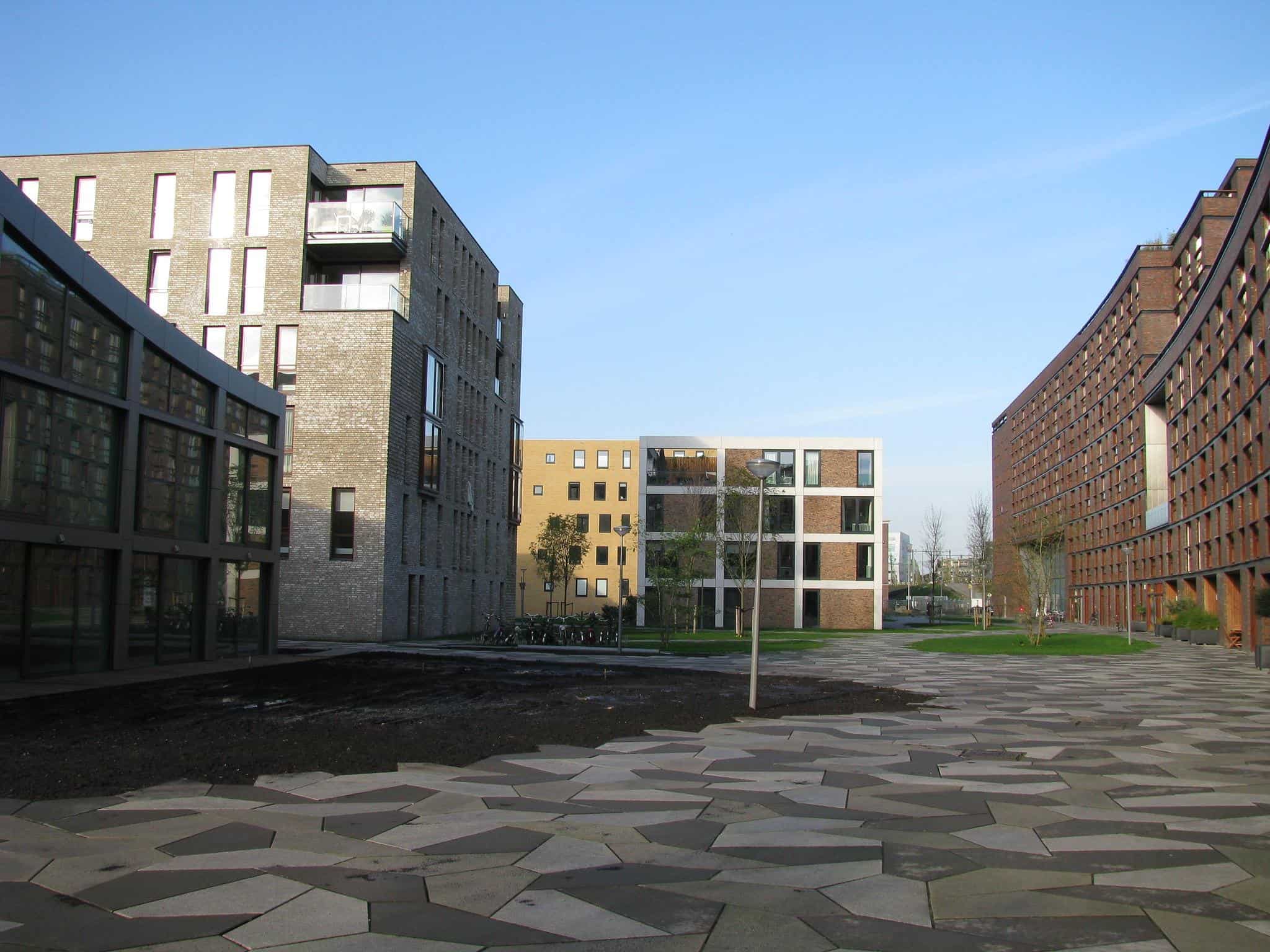
The quirky pavement tiles of Funenpark
photography by: Jan Joris Vereijken
Legendary New York street artist Kieth Haring visited Amsterdam in 1986 for a solo exhibition at the Stedelijk Museum. Whilst there, he asked the museum if he could create a more public piece of artwork. The museum offered him a forty-foot brick wall on the outside of their storage facility.
The mural is a 12-meter-high hybrid creature, part fish, part dog, with one of Haring’s infamous figures riding atop the creature. In contrast to the more colorful work the artist is known for, the mural was painted using sparse white paint. Kieth Haring finished the piece in one day.
The mural was covered in 1989 after the museum sold its storage facility. It became a cold store, and the brick walls were covered with insulated panels. Kieth died a year later in 1990 from an AIDS-related illness.
A street artist known locally as Mick La Rock campaigned tirelessly for four years to have the mural unveiled, and finally, in 2018, after almost thirty years hidden, the mural was revealed to the public. This is such a cool artwork and well worth visiting the food center to view it from across the canal.
Kieth was an artist and activist who began his career in the New York subway. After being picked up by a gallery, he gained worldwide acclaim. His work dealt with issues around war, race, sex and AIDS.
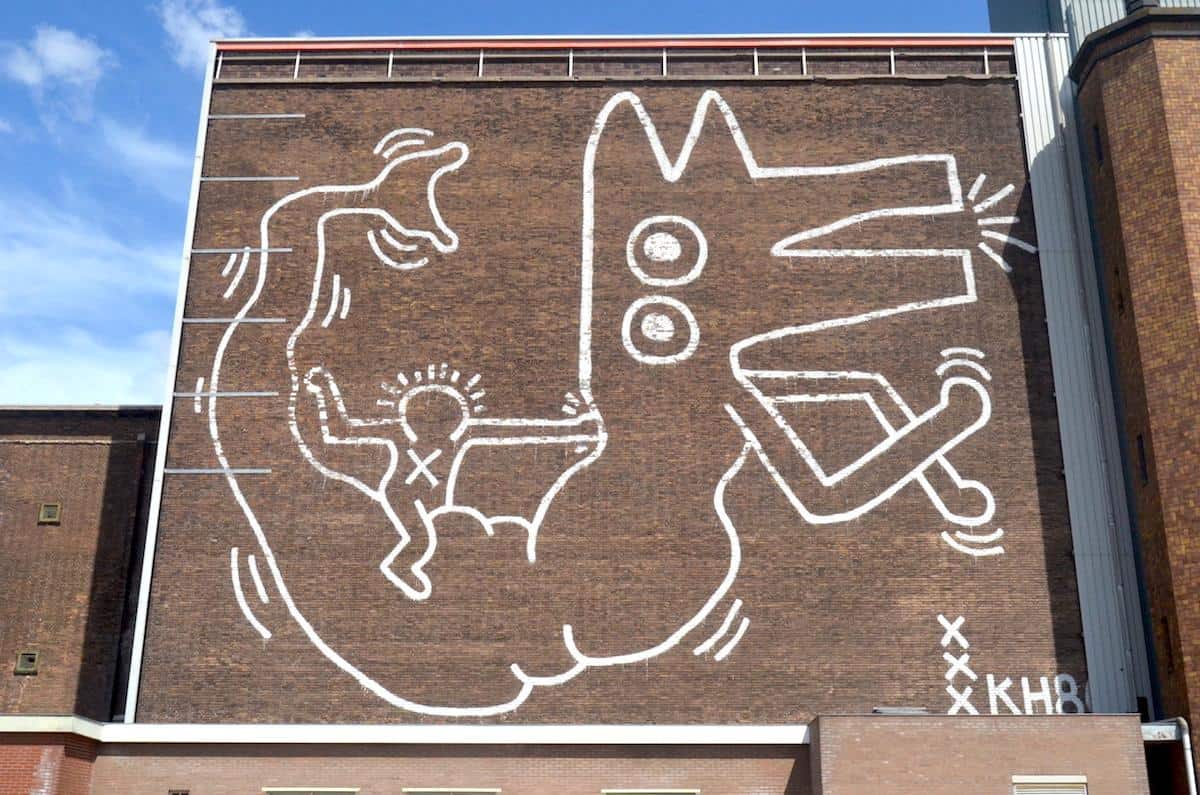
Keith Haring Mural in Amsterdam
photography by: Eriksw
The Pythonbrug or Hoge Brug bridge stretches over the railway basin from the Eastern dockyard and connects with Stuurmankade on the Borneo Island. The bridge is a rare sight. It was named python after the wavy shape it takes across the basin, originally named anaconda. The bridge was completed in 2001.
The bridge was awarded the international footbridge award in 2002 and is suitable for cyclists and pedestrians. The red wavy bridge can be accessed by train or a 15-minute bike ride from Amsterdam’s center. It’s a calm and peaceful nook in the busy metropolis.
Architects developed the area of Sporenburg on Borneo Isle to be the most compact new housing district in the Netherlands. The architects aimed for an old-fashioned picturesque development that would allow for the most spacious living in a small space.
The design is quaint and resembles De Jordaan’ in the west part of the Amsterdam inner-city. There is limited parking available around the bridge, and it is mostly served by underground, foot traffic and cyclists.
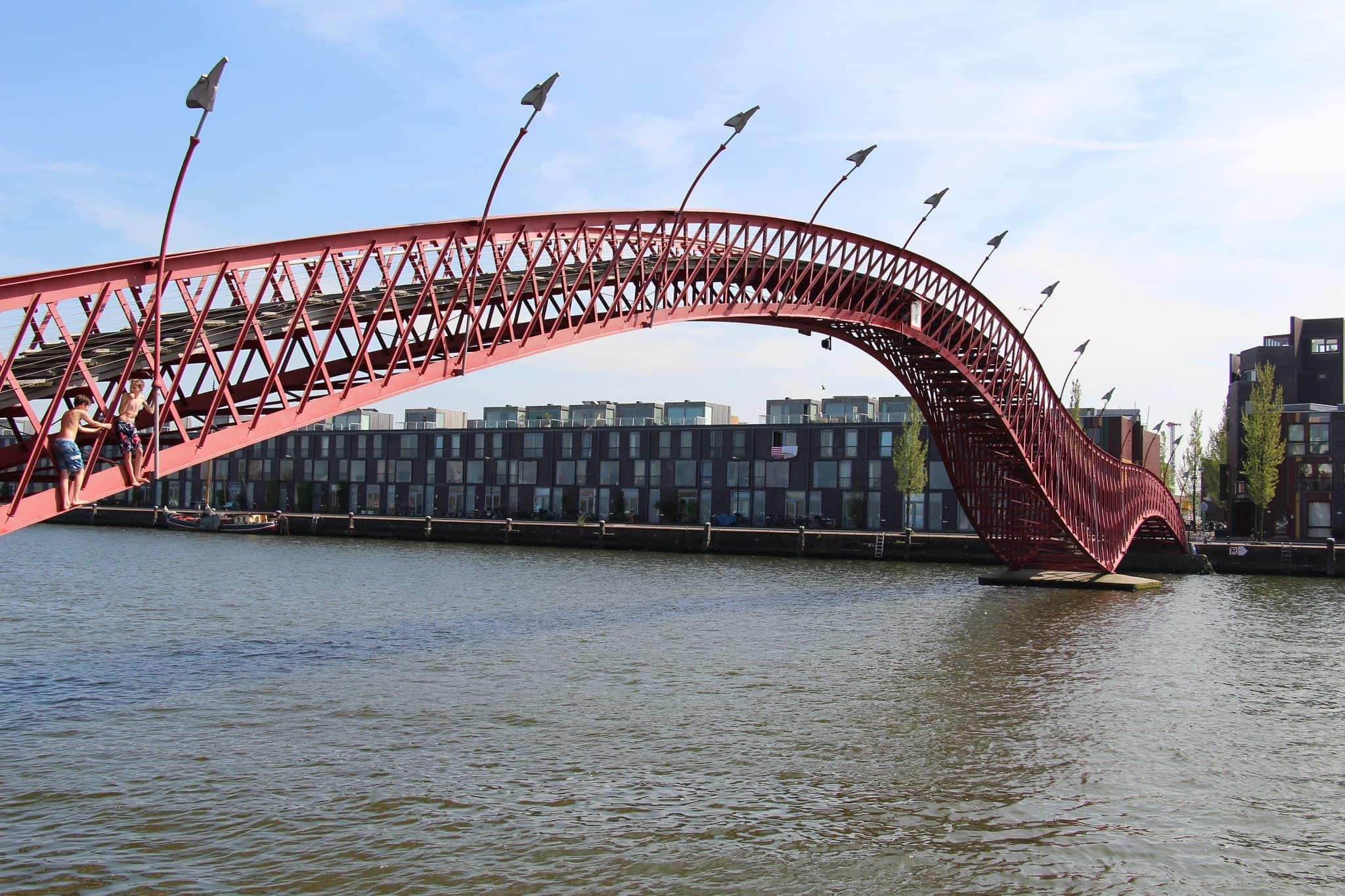
The Pythonbrug Bridge
photography by: Fred Romero
Burgerweeshuis was a children’s care facility, featuring a unique architectural design that is a must-see for any architecture enthusiasts visiting Amsterdam, as the building’s exceptional layout provides a rich spatial experience.
The architect of Burgerweeshuis, a man named Van Eyck, was guided by the motto: “a small world in a large, a large world in a small, a house like a city, a city like a house, a home for children”. This motto is plain to see in the design and structure of this oddly shaped space.
The small living modules have four round columns in the corners and a domed roof. The walls between the columns are made of an architrave, which forms a constant level. Under the architraves, the floors and windows vary in height.
After being used as a care facility, an academy building and an office, Burgerweeshuis fell into as state of disrepair for a long time. In 2014 the building was declared a national monument, and in 2015 renovation work began. In 2018 the building was declared the winner of the Geurt Brinkgreve Bokaal prize for most deserving of the redevelopment of Amsterdam’s cultural heritage.
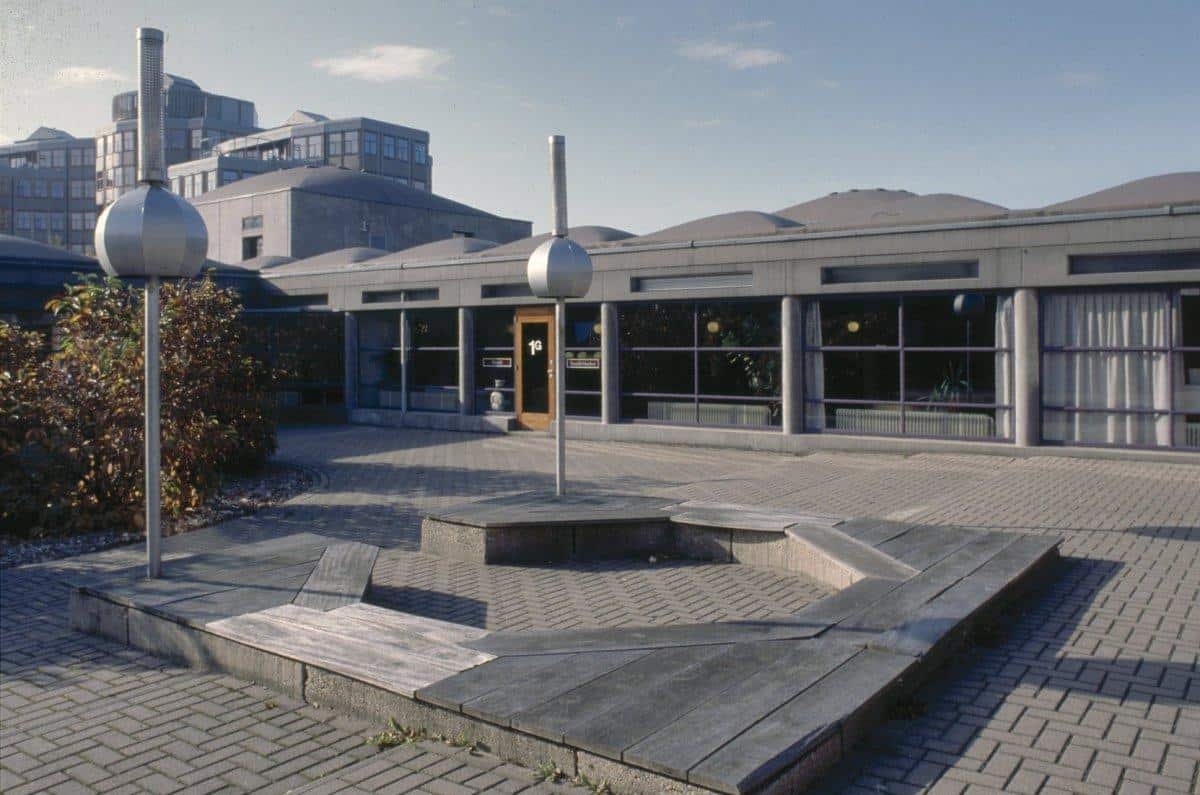
The inner courtyard of Burgerweeshuis
photography by: Rijksdienst voor het Cultureel Erfgoed
Standing out as an educational center for all age groups, Natureluur is far more than just simply a playground for bored kids. The children’s play equipment is built-in and around nature, allowing youngsgters to play in and on the water, helping them to learn more about plants and ecosystems.
Part of Sloterplas park, Natureluur is a publicly accessible complex, where both children and adults playfully and intriguingly explore many environmental aspects, most notably by a plethora of workshops, bookable at their website.
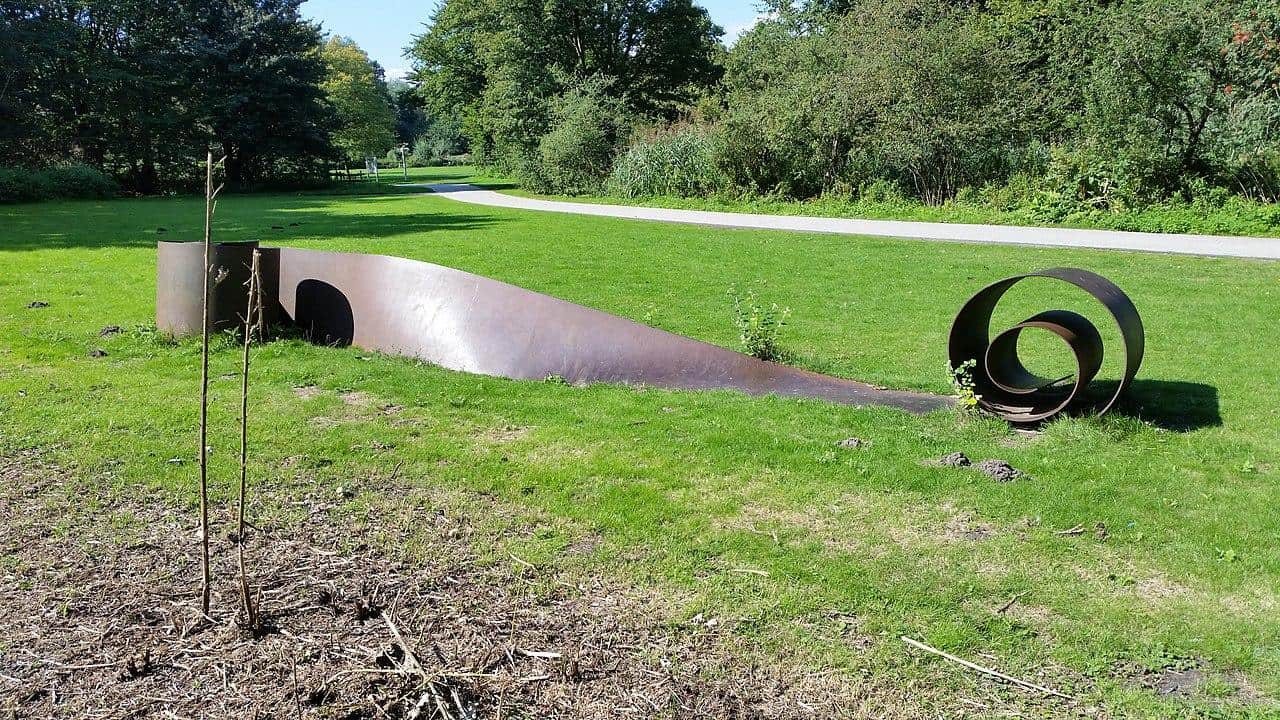
An intriguing sculpture at Sloterplas Park, the green space surrounding Natureluur
photography by: Ceescamel
It is an outdoor sculpture exhibition that takes place once every two years and lasts for four months. If you time your visit right, you will witness the 50 marvelous sculptures displayed in the green lanes and parks in Amsterdam Zuid.
The sculptures selected are always of museum quality and provide a meeting place for international artists and young Dutch talents alike. The premise is to bring people together through art and to make art accessible to everyone.
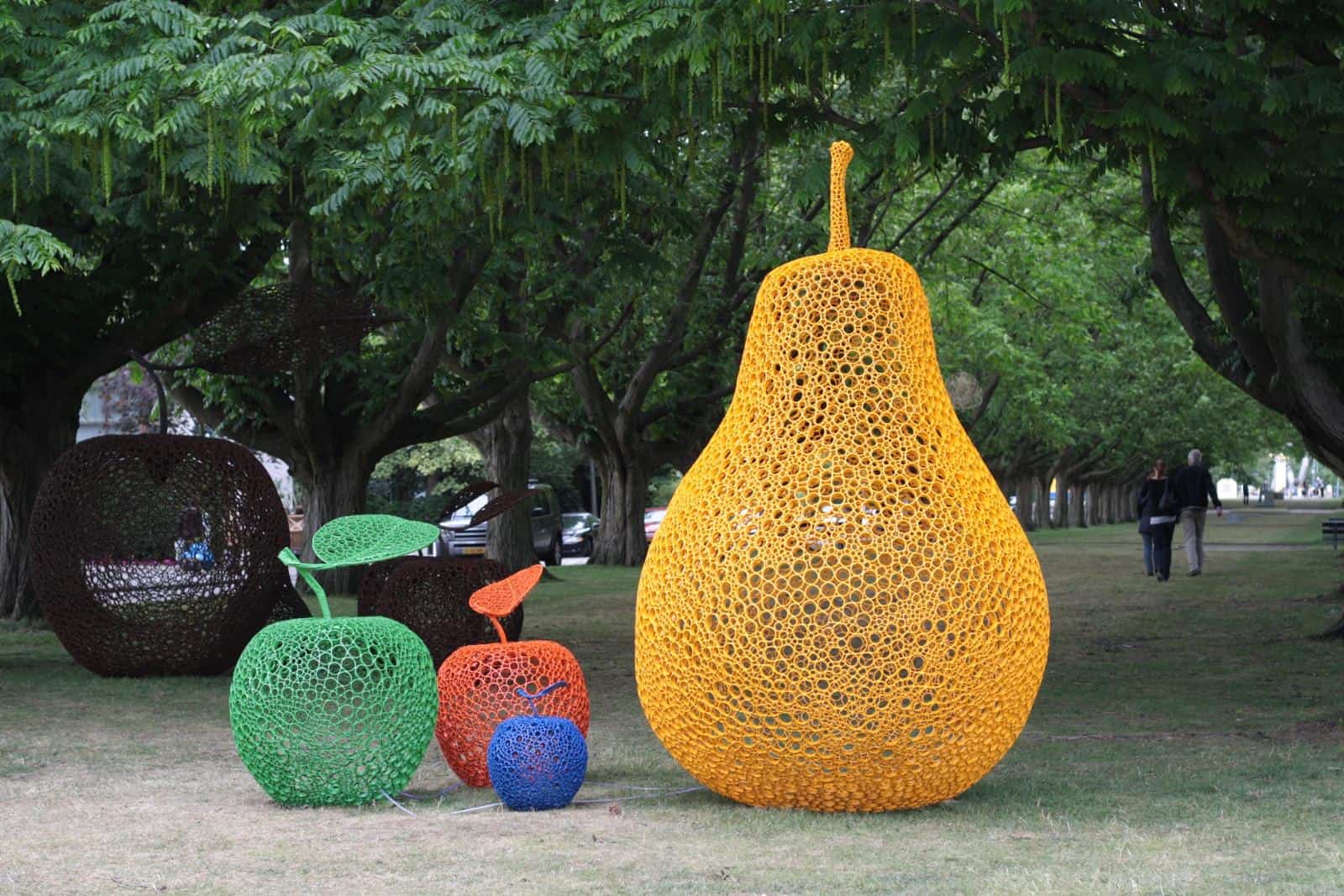
One of ARTZUID's art pieces placed across the lawn
photography by: 24oranges.nl
It is a beautiful wild nature reserve sandwiched between Amsterdam and the new town of Almere. This oasis of calm and natural beauty offers peace and serenity away from the city’s bustling crowds.
Along the walking tracks, you might be lucky enough to spot deers or wild horses. Wildlife is abundant here, and there are hiking, walking and cycling tracks surrounding the main reserve. Head to the main visitor center and take a guided safari tour to really appreciate all that the reserve has to offer.
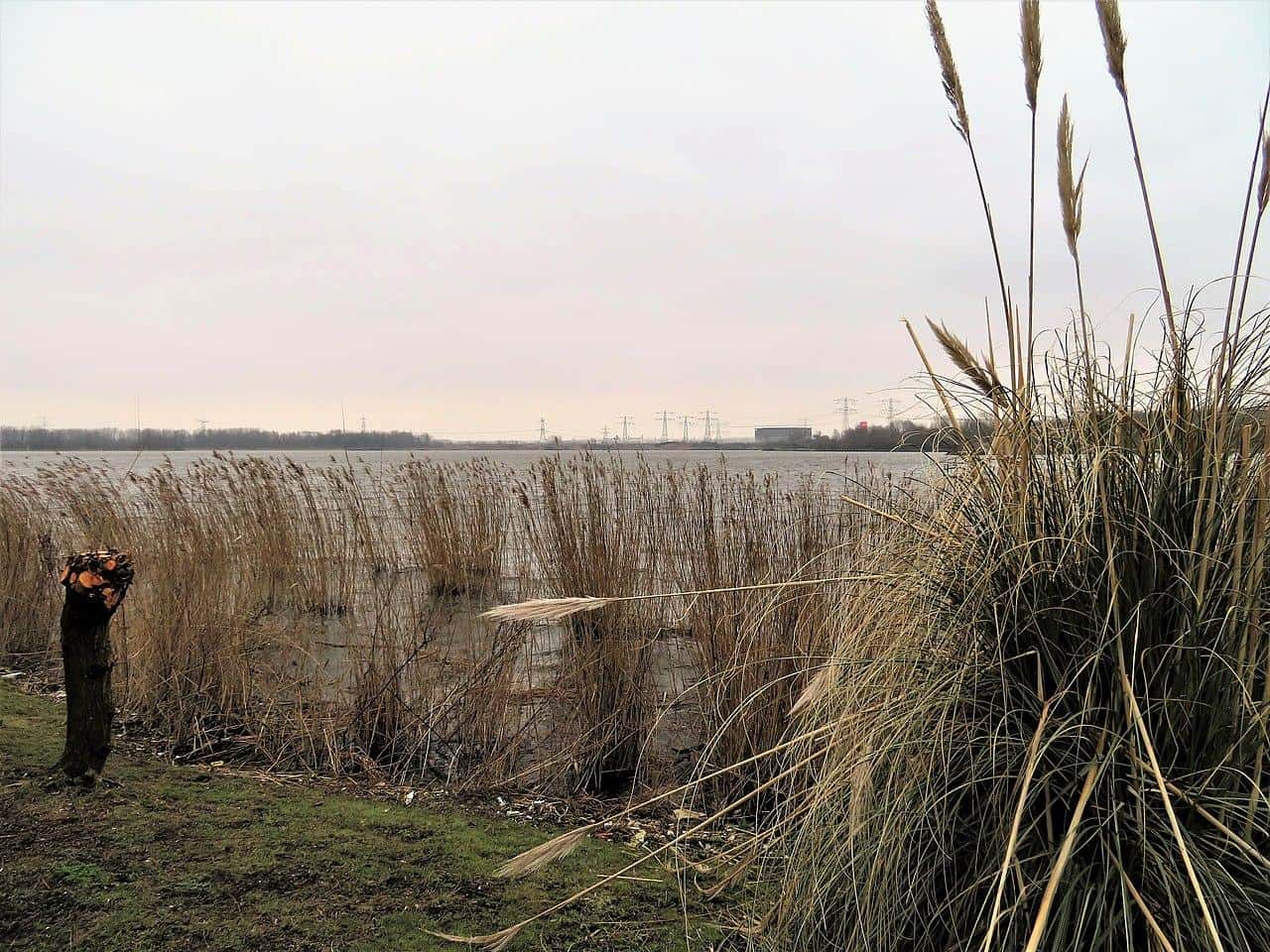
The reed-rich banks of Northern Ijpolder's lake
photography by: Marion Golsteijn